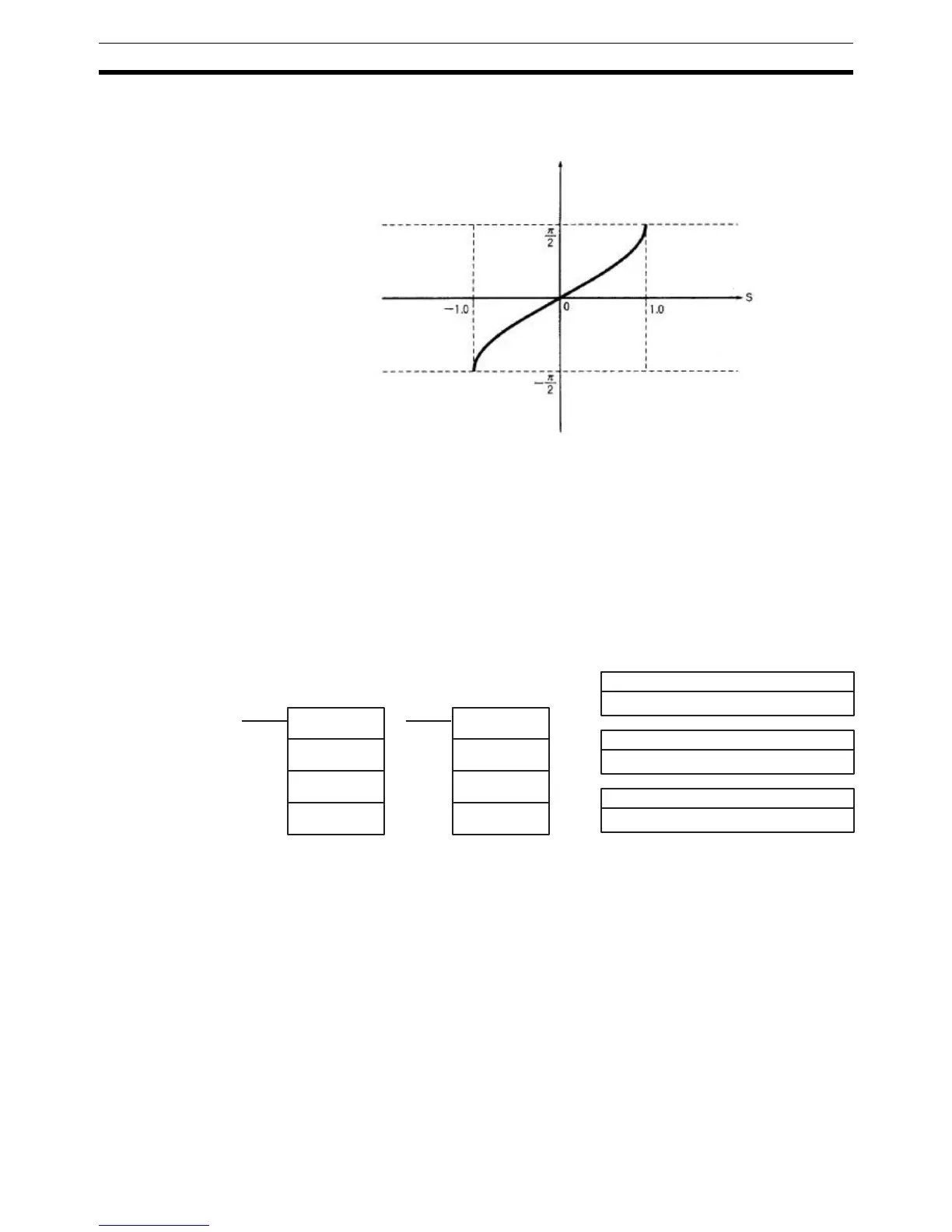366
Floating-point Math Instructions Section 5-24
The following diagram shows the relationship between the input data and
result.
Flags ER: Indirectly addressed EM/DM word is non-existent.
(Content of *EM/*DM word is not BCD, or the EM/DM area boundary
has been exceeded.)
ON if the source data is not recognized as floating-point data.
ON if the absolute value of the source data exceeds 1.0.
EQ: ON if both the exponent and mantissa of the result are 0.
5-24-15 ARC COSINE: ACOS(––)
Limitations The source data in S+1 and S must be in IEEE754 floating-point data format.
DM 6143 to DM 6655 cannot be used for R.
Description ACOS(––) calculates the arc cosine of a 32-bit floating-point number and
places the result in the specified result words. (The arc cosine function is the
inverse of the cosine function; it returns the angle that produces a given
cosine value between –1 and 1.)
When the execution condition is OFF, ACOS(––) is not executed. When the
execution condition is ON, ACOS(––) computes the angle (in radians) for a
cosine value expressed as a 32-bit floating-point number in S+1 and S and
places the result in R+1 and R. (The floating point source data must be in
IEEE754 format.)
S: Input data (sine value)
R: Result (radians)
R
S: First source word
IR, SR, AR, DM, EM, HR, TIM/CNT, LR
R: First result word
IR, SR, AR, DM, EM, HR, LR
Ladder Symbols
Operand Data Areas
Third operand: Always 000
−−−
ACOS(−− )
S
R
000
@ACOS(−− )
S
R
000

